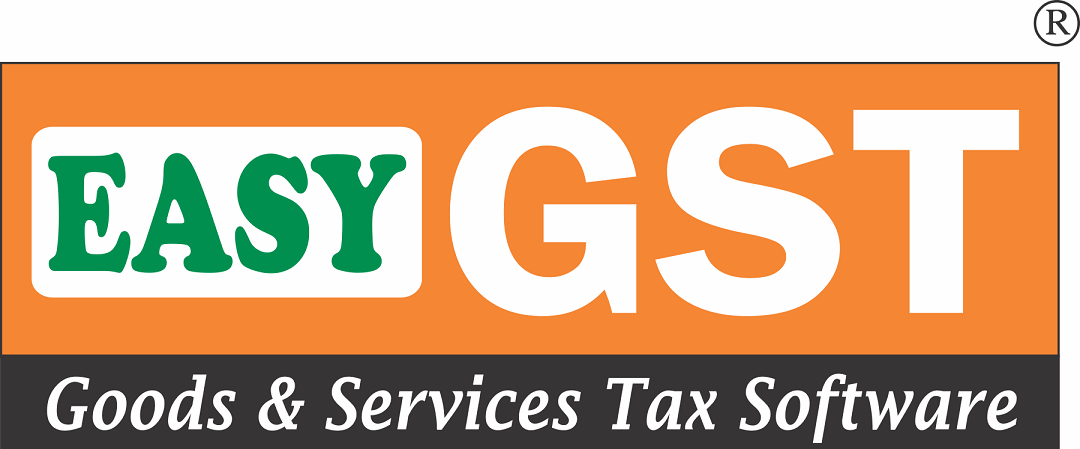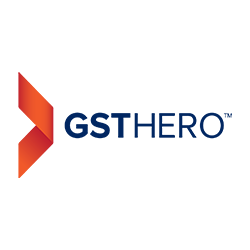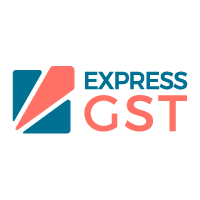What Is GST Reconciliation Software?
A specialised financial instrument called GST Reconciliation Software assists companies in precisely balancing the data from their accounting systems with the Goods and Services Tax (GST) data. This software helps firms do this crucial work quickly and easily by streamlining the often laborious and time-consuming manual reconciliation process.
The capacity of GST Reconciliation Software to automatically match the data entered into the accounting system with the GST data from several sources, including sales and buy transactions, is one of its primary benefits. This ensures accurate and error-free reconciliation by doing away with the requirement for human data entry and significantly lowering the likelihood of errors.
The extensive reporting features of GST Reconciliation Software are an additional benefit. Companies are able to produce comprehensive reports that give a concise summary of their GST transactions, which facilitates the identification and prompt resolution of inconsistencies. In addition to saving time, this assists companies in staying in compliance with GST laws and avoiding fines.
GST Reconciliation Software provides capabilities like data validation, data cleansing, and exception handling in addition to reconciliation and reporting. These cutting-edge capabilities enhance the precision and dependability of the data while streamlining the overall GST reconciliation procedure. Additionally, because GST Reconciliation Software is so adaptable, companies can modify it to meet their own need.
This makes it an affordable option for companies of all sizes since they can select the capabilities they require and only pay for what they use. All things considered, GST Reconciliation Software is an essential tool for companies that handle GST. It helps companies stay in compliance with GST laws by streamlining and simplifying the reconciliation process, guaranteeing accurate and error-free reporting.
What Are The Recent Trends In GST Reconciliation Software?
Businesses' use of GST reconciliation software has significantly increased in recent years. It is now crucial for businesses to implement effective tools for managing their GST compliance and reconciliation as the Goods and Services Tax (GST) keeps changing and growing more complicated.
Every prospective buyer should be informed of the most recent developments in GST reconciliation software, which we shall cover.
1. Automation And Integration: The focus on automation and integration is one of the most notable trends in GST reconciliation software. Manual reconciliation has become a laborious and error-prone procedure due to the growing number of GST transactions and the regular modifications to the GST legislation. In order to speed up the reconciliation process and get rid of human error, software suppliers are implementing capabilities like bulk upload, auto-reconciliation, and real-time data synchronisation.
2. Cloud-Based Solutions: The move to cloud-based solutions is another trend in the market for GST reconciliation software. Businesses are choosing cloud-based software over traditional desktop applications due to the growing popularity of remote work and the requirement for anytime, anywhere access to data. Because of their scalability, affordability, and improved security, cloud-based solutions are a popular option for consumers.
3. Customisation And Scalability: Software suppliers are increasingly providing greater flexibility and customisation choices to meet the various needs of businesses, each of which has different GST compliance requirements. Customers can create a unique reconciliation solution that satisfies their unique needs by selecting from a variety of features and modules. Additionally, as companies seek to grow, scalability has emerged as a crucial component. In order to avoid the need for regular software upgrades, software vendors are now providing scalable solutions that can expand with the company.
4. Advanced Analytics: The GST reconciliation procedure heavily relies on data analytics. Businesses can obtain important insights into their GST data and promptly spot inconsistencies or mistakes with the aid of advanced analytics. In order to give comprehensive analysis, predictive insights, and wise recommendations for better GST management, numerous software companies are integrating AI and machine learning capabilities.
5. Mobile-Friendly Interfaces: In recent years, mobile-friendly interfaces have emerged as a crucial component of GST reconciliation software. Companies desire portability and the ability to use their mobile devices to access the software while on the go. For easier access and a better user experience, software companies are creating responsive and user-friendly mobile applications.
Benefits Of Using GST Reconciliation Software
For companies of all sizes that must comply with Goods and Services Tax (GST) regulations, GST reconciliation software is a potent tool that has become indispensable. This software helps you maintain compliance with government requirements and expedites the process of reconciling your GST filings.
The following are the main advantages of utilising GST reconciliation software:
1. Reconciliation That Is Precise And Effective: The capacity of GST reconciliation software to accurately and quickly reconcile your GST returns is by far its greatest advantage. You can be sure that your returns are error-free thanks to the software's automatic data matching and error detection features. You can save time and effort by using this function instead of manually cross-checking and fixing mistakes.
2. Tracking And Reporting: Real Time Keeping track of your GST credits and obligations is made simpler with the help of GST reconciliation software, which tracks your transactions in real time. Additionally, the software produces editable reports that provide you with a thorough summary of your GST data, enabling you to make well-informed decisions and spot any inconsistencies that require immediate attention.
3. Enhances Adherence: GST reconciliation software greatly lowers the possibility of human error by automating the reconciliation procedure. This guarantees that your GST returns adhere to governmental guidelines, preventing any penalties or fines that can result from inaccurate or postponed files.
4. Conserves: Resources and Time It can take a lot of time and effort to manually reconcile GST data, particularly for companies that handle a lot of transactions. You can save time and money by employing GST reconciliation software, which you can then use more effectively in other areas of your company.
5. Smooth Accounting System Integration: Data import and reconciliation are made simpler by GST reconciliation software's smooth integration with your accounting systems. By doing away with the necessity for manual data entry, this integration lowers the possibility of mistakes and saves you time. 6. Easy-to-use Interface The majority of GST reconciliation software has an easy-to-use interface that requires little training. As a result, you can save the trouble and expense of hiring specialised staff because even people with little accounting experience can easily utilise the software.
Important Factors To Consider While Purchasing GST Reconciliation Software?
To make the best decision for your company, there are a few important elements to take into account when choosing to buy GST reconciliation software. The following are the most crucial things to remember:
1. Compatibility: The software's ability to work with your current systems should be your first priority. Make sure the program can interact easily with your accounting software and other company tools to avoid any delays in your operation.
2. Accuracy: Accuracy is crucial when it comes to GST reconciliation. For the program to correctly reconcile your data and spot any inconsistencies, it should have sophisticated algorithms and features. To guarantee reliable findings, look for features like data validation and automatic error detection.
3. Automation: To save you time and effort, a quality GST reconciliation program should automate the entire reconciliation procedure. To make your reconciliation process more efficient, look for features like bank feeds, automatic matching, and automated data entry.
4. User-friendly Interface: The software has to be simple to utilise and instinctive. If you have a team working on the reconciliation process, this is especially crucial because they should be able to utilise the program with little assistance.
5. Security: Your financial information is private and needs to be kept safe at all times. To protect your data, pick software that provides advanced security features like data encryption and frequent backups.
6. Customer Service: When buying any software, having a trustworthy customer service team is essential. Seek out software companies that have a solid reputation for promptly answering questions and fixing problems, as well as round-the-clock customer service.
7. Reasonably Priced: Although GST reconciliation software can be a wise purchase, it's crucial to take your spending limit into account. Seek out software that provides clear pricing and a selection of plans to suit your company's requirements. You may choose wisely while buying GST reconciliation software if you keep these things in mind. To choose which choice is ideal for your company, don't forget to do your homework and compare them.
What Are The Key Features To Look For In GST Reconciliation Software?
In order to be sure they are investing in the best GST reconciliation software for their company, purchasers need consider a number of important aspects. In addition to making the reconciliation process more efficient, these features also reduce errors and save time and money.
1. Automated Reconciliation: This is the most important feature to search for in a GST reconciliation program. This indicates that there is no need for human involvement because the software can automatically match and reconcile GST reports, invoices, and payments. This lowers the possibility of human error in addition to saving time.
2. Compatibility With Various Data Sources: An effective GST reconciliation program should be able to manage information from a variety of sources, including bank statements, accounting software, and ERP systems. This guarantees that all data and transactions are precisely recorded and balanced.
3. Real-Time Updates: Having a GST reconciliation program that provides real-time updates is essential given the constantly evolving tax laws and regulations. This guarantees that the program can precisely reconcile GST data and is always current with the most recent tax laws.
4. Sturdy Analytics And Reporting: Seek out software with comprehensive analytics and reporting features. Businesses are able to make well-informed judgements by using this to obtain insights and spot any trends or inconsistencies in their GST data.
5. User-Friendly Interface: Although sophisticated functionality are crucial, a software's user-friendly interface is just as crucial. This facilitates navigation and efficient program use for non-technical people.
6. Accuracy Of Reconciliation: A GST reconciliation software's only goal is to provide an accurate and error-free reconciliation. To reduce the possibility of inconsistencies, look for software that has integrated validation tests and error correction capabilities.
7. Secure Data Management: Selecting software that provides secure data management is essential when handling sensitive financial data. This covers functions including data backup, user access controls, and data encryption.
8. Workflows That Can Be Customised: Every company has its own workflows and reconciliation procedures. A solid GST reconciliation program should be adaptable to the unique requirements of the company.
9. Customer service: Businesses may run into problems or have enquiries even with user-friendly software. Choose software that provides dependable customer service to guarantee seamless operation and prompt resolution of any issues. In summary, companies should prioritise aspects like automation, data compatibility, real-time updates, reporting capabilities, user-friendliness, accuracy, security, customisable workflows, and customer support while searching for a GST reconciliation software. Businesses can choose the best GST reconciliation software for their needs by keeping these important aspects in mind.
Why Do Businesses Need GST Reconciliation Software?
The Goods and Services Tax, or GST, is a crucial component of today's business environment for organisations that conduct business in nations where it is enforced. Complex procedures including tax computations, return filing, and resolving inconsistencies between GST filings and financial records are all part of this tax system. Businesses may find GST reconciliation to be a difficult and time-consuming operation due to the growing number of transactions and evolving tax laws. Software for GST reconciliation can help with this. It is an effective tool that makes it easier to match GST information between financial records and GST returns. Businesses may assure compliance with GST requirements, save time, and minimise errors by automating this procedure.
However, these are only a few additional justifications for why companies want GST reconciliation software:
1. Accuracy And Compliance: To accurately reconcile GST data, GST reconciliation software makes use of sophisticated algorithms and data matching strategies. This guarantees adherence to GST requirements and lowers human mistake. Companies can save money and preserve their positive market reputation by avoiding fines for inaccurate or late GST registration.
2. Time-Saving: The procedure of manually reconciling GST data takes a lot of time. Businesses can finish this work much faster, though, if they use GST reconciliation software. This increases overall productivity and efficiency by freeing up precious resources that may be used for other important business operations.
3. Analytical Insights: The software offers reports and analytical insights in addition to GST data reconciliation. Businesses can learn a lot about their cash flow, tax obligations, and financial situation by examining data trends and patterns. Finding areas for cost savings and making well-informed company decisions can both benefit from this information.
4. Customisation And Integration: Software for GST reconciliation can be tailored to meet a company's unique requirements. This implies that companies can select the qualities that best meet their needs. To further streamline the reconciliation process and eliminate the need for manual data transmission, the program can also be linked with current accounting systems.
5. Scalability: Businesses' requirements for GST compliance change as they expand. Because of its scalability and flexibility, GST reconciliation software may be used by companies of any size. It can handle increasing corporate activities, shifting tax laws, and a growing volume of transactions.
How Much Time Is Required To Implement GST Reconciliation Software?
The size of your company and the particular software you select will determine how long it takes to implement GST reconciliation software. The software's complete implementation and integration into your current systems, however, may take a few days to a few weeks on average. Making ensuring that the required data is accurately and currently input into the GST reconciliation software is the first step in putting it into use.
Depending on the software, this could entail a one-time data transfer or continuous data syncing. After the data is in the system, the software must be set up to meet the unique requirements of your company. This could entail mapping GST codes, granting user access, and creating custom rules. The intricacy of your company and the capabilities of the program will determine how long this process takes.
Another crucial step in the implementation process is educating yourself and your team about the product. Typically, the software provider offers in-person training sessions or online tutorials for this. All things considered, the GST reconciliation software setup process is quite simple and quick. To guarantee a seamless transition to the new program, it is crucial to allot enough time for data transfer, system configuration, and training.
What Is The Level Of Customization Available In GST Reconciliation Software?
A range of features and tools are available in GST reconciliation software to assist firms in effectively reconciling their GST transactions. The degree of customisation offered is one of the most important factors that companies should take into account when selecting a GST reconciliation program. Because it enables companies to adapt the software to their unique requirements and operations, customisation is crucial. Additionally, it guarantees that the software is in line with the particular GST regulations of the company.
Businesses should search for the following degrees of customisation in a GST reconciliation program:
1. Data Input Flexibility: Companies should be able to enter data in a number of file formats, including CSV, Excel, and XML, using the software. This saves time and effort when entering data and allows businesses to select the format of their choice.
2. Setting Up The Rules For Reconciliation: GST reconciliation entails comparing the information from suppliers with that from the taxpayer's GST filings. Businesses should be able to customise reconciliation rules in the program to meet their own requirements. This may entail establishing precise matching criteria or establishing limits for value discrepancies.
3. Customised Reporting: To meet the needs of the company, the software should provide a range of customisable reporting options. Among other things, this may entail generating reports according to particular time frames, vendors, or GST codes.
4. Integration With Accounting Software: To handle their finances, many organisations utilise accounting software. Businesses may reconcile GST straight from their accounting system with the help of a reliable GST reconciliation software that integrates seamlessly with accounting software.
5. Role-Based Access: Companies frequently assign separate users to handle different facets of GST reconciliation. Role-based access should be supported by the software, giving various users varying degrees of access according to their roles. This guards against unwanted access and guarantees data protection. Businesses can select a GST reconciliation software solution that best meets their demands and expedites their process by taking into account the degree of customisation offered.
Which Industries Can Benefit The Most From GST Reconciliation Software?
A useful tool for companies in a variety of industries is GST Reconciliation Software. In the end, this software can help businesses save time and money by streamlining the GST reconciliation process and offering substantial benefits.
1. Retail Sector: One of the main industries that stands to gain the most from GST Reconciliation Software is the retail sector. Retailers must contend with various tax rates, compliance requirements, and frequent modifications to GST regulations since the Goods and Services Tax (GST) was implemented. Accurately reconciling their sales data with GST returns is made more difficult by this. This procedure can be automated with GST Reconciliation Software, lowering the possibility of mistakes and shielding merchants from fines.
2. Manufacturing Sector: Businesses in the manufacturing sector have intricate supply chains that involve numerous suppliers and vendors. It can take a lot of time to manage GST compliance and reconciliation for all of these transactions, particularly when invoices and supporting documentation come in various forms. By automating data matching and highlighting any inconsistencies, GST Reconciliation Software can expedite this procedure and enable manufacturers to precisely reconcile their GST data.
3. E-Commerce Sector: Companies operating in this sector must oversee a high volume of transactions across multiple online marketplaces. Accurately tracking and reconciling GST data becomes difficult as a result. E-commerce companies can benefit from GST Reconciliation Software's ability to integrate with many platforms and compile all sales data in one location. This offers a comprehensive picture of their GST compliance in addition to streamlining the reconciliation procedure.
4. Financial Institutions: Because banks, insurance providers, and other financial institutions handle a lot of transactions, GST reconciliation is a difficult and drawn-out procedure. In order to ensure GST compliance, financial institutions can save a significant amount of time and effort by automating this process with GST Reconciliation Software.
5. Healthcare Sector: With various tax rates applied to various services and medications, the healthcare sector is also significantly impacted by GST. By lowering the possibility of mistakes and guaranteeing adherence to GST regulations, GST Reconciliation Software can assist healthcare providers in accurately reconciling their GST data.
Conclusion
To sum up, any organisation that wants to guarantee precise and effective handling of its GST transactions must invest in a dependable and efficient GST reconciliation program. Important considerations for choosing the best software, like features, compatibility, ease of use, and customer service, have been outlined in this buyer's guide.
Before making a choice, don't forget to carefully consider your budget and business requirements. Asking possible software suppliers for samples or demos could also be useful in determining whether the program satisfies your needs. Remember that purchasing a top-notch GST reconciliation program will help you save time and money, lower errors and penalties, and gain insightful information for your company.
Never be afraid to ask for referrals from other companies or speak with subject-matter specialists. We hope that this advice has helped you find the best GST reconciliation software for your company. You can maintain tax compliance and expedite your GST reconciliation procedure with the correct software.






















